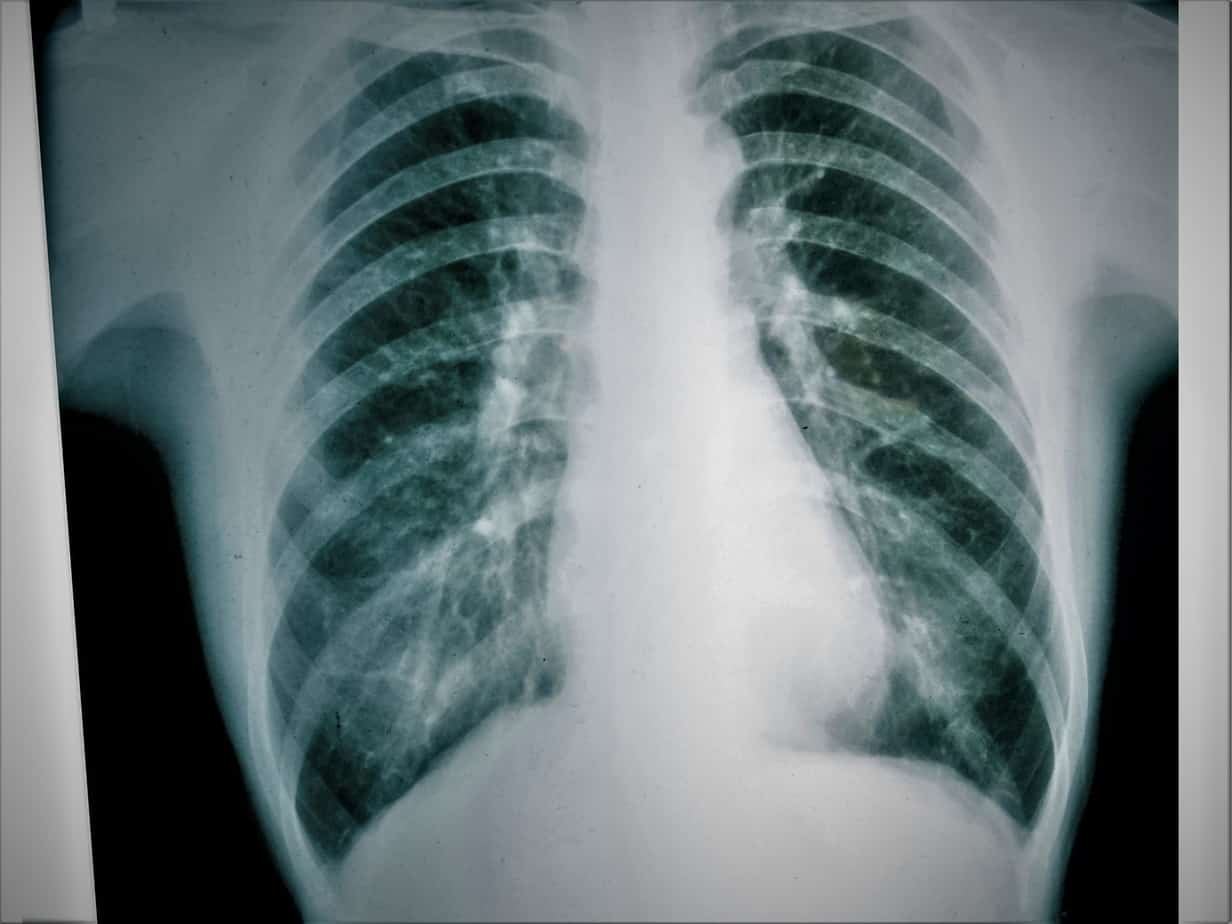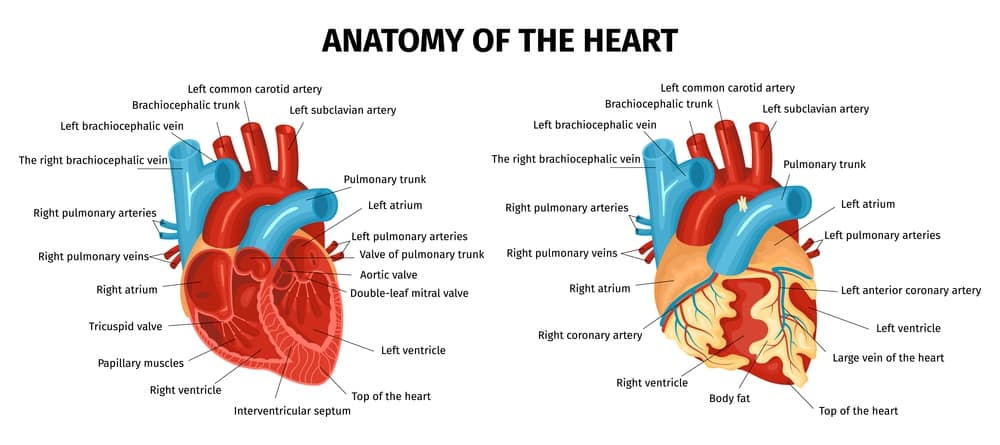Estimated reading time: 7 minutes
It can be scary to hear your doctor say your child has a pediatric heart murmur. Thankfully, the vast majority of pediatric heart murmurs are innocent or benign. There are several types of heart murmur, however a murmur of the heart is not the problem; the murmur is just an exam result based on an underlying issue. Congenital heart disease, CHD, occurs anywhere from 5 to 50 per 1000 live births. One review found 75 cases per 1000 births, and of those, 6 per 1000 were moderate or severe, which translates to 6 moderate to severe cases per 1 million live births.
Table of contents
What is a Heart Murmur?
A heart murmur is simply a sound that the blood makes as it’s passing through your heart. Typically, blood flow through the heart is quiet, smooth, and calm, and all you hear when listening to the heart is the closing of the valves.

Think of a quiet, smooth river flowing in front of you, not making any noise; that’s like normal blood flow. As the river gets to the rocks or the rapids, there occurs a lot of turbulence and noise. It’s similar in the heart. Turbulence is noise, which is what a heart murmur is. Holes between chambers, thick or thin heart muscles, abnormal blood vessel pathways, or defects in the structure of the chambers can all cause turbulence. There are two basic types of murmurs: innocent or benign, and pathologic. Not all pathologic murmurs are life-threatening.
How are Heart Murmurs Graded?
Heart murmurs are graded on a scale of 1 to 6, depending on how loud they are. Where and when they occur during the heartbeat is important. When the heart squeezes blood out to your body systems is called systole and that causes systolic murmurs. Additionally, diastolic murmurs occur when your heart relaxes and takes in the next load of blood. If a click is heard, then when it occurs has a bearing on the murmur.
I am Worried about a Murmur of the Heart
Try not to worry first of all as two-thirds of all childhood age children may have innocent heart murmurs. Fevers, illness, and running around can make an innocent murmur sound louder. Positioning can effect the detection of a murmur. Children with a murmur ages 0 to 6 months, or has difficulty feeding, growing, or gaining weight, or who complains of chest pain with exertion or shortness of breath, should be checked out.
Seven Key Features of Innocent Heart Murmurs, the 7 S’s
- Short duration
- Single, no clicks
- Small, limited to a small area on the exam
- Soft sound
- Sweet, not harsh sounding
- Systolic, limited to the squeezing phase of the heartbeat
- Sensitive to breathing and heart rate
Does My Child Need to Be Referred to a Cardiologist?

Innocent pediatric heart murmurs are very common, and your doctor may be very comfortable diagnosing an innocent murmur. If there is any doubt, then they may refer to a cardiologist. A pediatric cardiologist can accurately diagnose your child. Innocent murmurs do not need further evaluation. Alternatively, they made elect to do some testing to further clarify the status of your child’s heart, such as an EKG which is an electrical recording of the heart activity, a chest x-ray looking at the heart silhouette on the x-ray, or obtain an echocardiogram or echo which is an ultrasound of the heart looking at the structure of the chambers and valves and how they work in sequence.
Does My Child Have Congenital Heart Disease, or CHD?
If your child has a heart murmur and is otherwise well, they probably do not have serious congenital heart defects. The incidence of CHD varies between 4 and 50 per 1000 live births, and of those, 6 per 1000 were moderate or severe. Therefore, moderate or severe cases occur in about 6 per 1 million live births.
What Are the Types of Congenital Heart Defects, CHD that Cause Pediatric Murmurs?
Septal Defects
There are several kinds of congenital heart defects, including septal defects or holes that occur between the inner walls of the heart chambers, for example, an atrial septal defect (ASD) between the two atrial chambers above. A ventricular septal defect (VSD) occurs between the two lower ventricular chambers. If they are relatively small holes, they often close over themselves with time. Significant defects may cause more problems.

Valvular Defects
Pediatric heart murmurs can be due to valvular defects. First, some basic heart anatomy. There are four chambers, so there are four valves in the heart. The right upper chamber called the right atrium is where all the blood from the body returns to the heart. That empties through the tricuspid valve into the right ventricle which then then empties into the lung circulation through the pulmonary valve. The blood then returns to the left atrium and passes through the mitral valve down into the left ventricle. Blood is then pumped out to your body through the aortic valve.
Valvular Stenosis and Regurgitation
Valvular stenosis is a stiff or malformed valve that may not open entirely; for example, aortic stenosis. Regurgitation is when a valve leaks backwards due to poor closure, such as mitral regurgitation. Mitral regurgitation often has excess tissue on the valve. This creates a murmur and a click, but it also makes additional work for the atrial chamber to pump that blood again. Each valve may have its own unique set of symptoms and exam findings. Abnormal valve structure may occur. An aortic valve typically has three leaflets, some people have two, called a bicuspid aortic valve. This usually does not cause any problems.
Cardiomyopathies
Heart muscle disorders, or cardiomyopathies, can cause murmurs. Hypertrophic cardiomyopathy (HCM) thickens the heart muscle just below the aortic valve. HCM can cause fainting, chest pain, or even sudden death. Sports physicals often uncover HCM. Several severe conditions are congenital, like the tetralogy of Fallot, total anomalous pulmonary venous return (TAPVR), tricuspid atresia, transposition of the great vessels, and truncus arteriolis. Cyanotic congenital heart defects like these are usually found shortly after birth and cause a blue tint to the skin. Trisomy 21 or Down’s syndrome children can also have an EndoCardial cushion defect, similar to a ventricular septal defect. Screening occurs routinely in Down’s children.
Now What?
Now take a deep breath. Be sure to ask plenty of questions to completely understand what your doctor is telling you about your child. Ask about the heart murmur severity for your own peace of mind. Your doctor will be straightforward with direct questions.
An Example from Life
One time I told a young mother many years ago that her child had a heart murmur. I disclosed lots of detail about murmurs and what it might mean, and what was the likely cause. I thought I was being clear and that she understood me when she left. Thirty minutes later her husband called the office quite angry that I’d upset his wife so much, which caught me by surprise. He felt better after I explained exactly what I told his wife. An eventual echocardiogram was unremarkable, as I recall. We went on to have a good relationship with that family for many years. At the mention of a murmur she panicked and stopped listening to everything else I said.
It can be scary hearing that your child has a heart murmur. Fortunately most murmurs are innocent and are very common. I have listed some links below to sources that will give you more information on all these things discussed above. I hope this helps.
Children’s Hospital of Philadelphia
A CDC Article.
Article.
To your good health, and the good health of your child,
Kevin McCurry, MD
It is noise created by blood coursing through the heart due to turbulent flow.
If your child is struggling to grow and thrive, or in physical activity then get it checked out.
Septal defects in the inner walls, valve defects, muscle defects or deformities, and abnormal blood vessel locations.
Join my Substack Newsletter
recent posts
Estimated reading time: 8 minutes Set to affect 12 million people by 2040, is linked to viruses like COVID-19, its symptoms include tremors and slow movements, significantly impacting daily life....
This article provides an overview of turmeric, a traditional food spice used in Chinese and Ayurvedic medicine. It discusses the safety of turmeric and its active ingredient, curcumin, and how it may...


